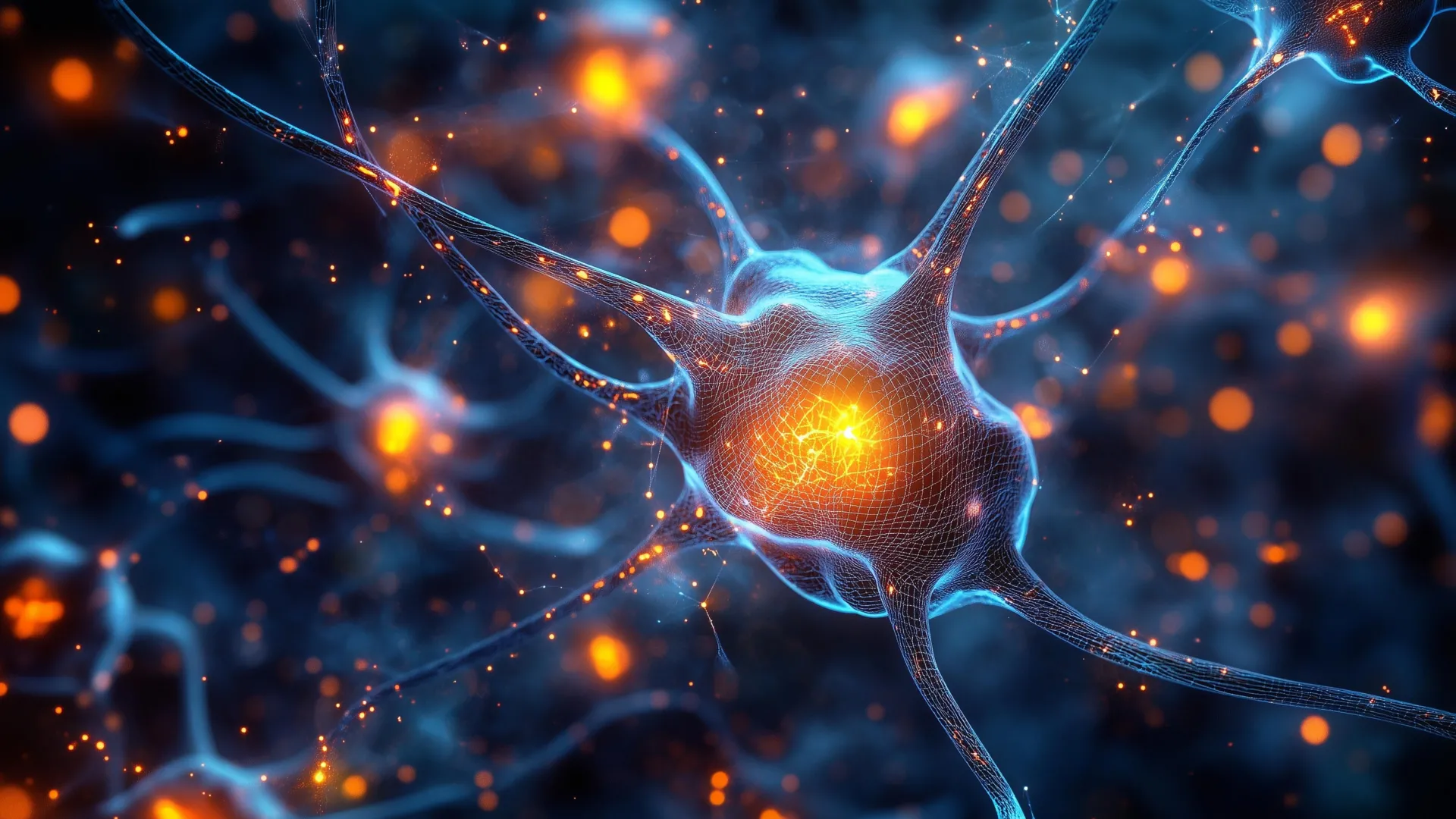Fat-fueled neuron discovery could unlock new treatments for brain disease
- Date:
- October 25, 2025
- Source:
- University of Helsinki
- Summary:
- Researchers found that neurons can use fat, not just sugar, to power the brain. When a protein called DDHD2 fails, this process breaks down and leads to serious brain problems. Scientists were able to restore damaged cells by feeding them fatty acids, reviving their energy in just 48 hours. The discovery could help pave the way for new brain treatments.
- Share:

Researchers from the University of Queensland (Australia) and the University of Helsinki (Finland) have discovered that neurons are capable of using fat as a source of energy, challenging the long-held belief that they rely only on sugar. Even more remarkably, when the brain's energy demand increases, neurons can produce their own fats by recycling components of their own cells. This process depends on a crucial protein known as DDHD2.
The discovery that could change lives
In a rare brain disorder called Hereditary Spastic Paraplegia 54 (HSP54), the DDHD2 protein fails to function properly. When this happens, neurons lose their ability to generate fats needed for energy and normal operation, leading to early and progressively worsening communication problems between nerve cells.
Children affected by HSP54 often begin showing difficulties with movement and thinking at a young age. However, this new finding offers reason for optimism. In laboratory experiments, scientists treated damaged neurons with specific fatty acid supplements and found that within just 48 hours, the cells regained their energy production and normal activity.
"This is a real game-changer," said Dr. Merja Joensuu, who conceived the project and led the study at the Australian Institute for Bioengineering and Nanotechnology. "We've shown that healthy neurons rely on fats for fuel, and when this pathway fails in conditions like HSP54, it may be possible to repair the damage and reverse the neuropathologies."
New technologies fueling progress
The researchers are now preparing for the next phase of their work, which involves testing the safety and effectiveness of fatty acid-based treatments in pre-clinical models. These studies will determine whether similar approaches could eventually be used in humans, and whether this fat-based energy system might also play a role in treating other neurological diseases that currently lack effective therapies.
"We will continue the exciting collaboration with new non-invasive technologies to image the brain and therefore aid a faster development of the potential therapy. This breakthrough doesn't just rewrite the textbooks, it could transform lives" Dr. Giuseppe Balistreri from the University of Helsinki says.
Story Source:
Materials provided by University of Helsinki. Note: Content may be edited for style and length.
Journal Reference:
- Saber H. Saber, Nyakuoy Yak, Xuan Ling Hilary Yong, Yih Tyng Bong, Hannah Leeson, Chuan-Yang Dai, Tobias Binder, Siyuan Lu, Reshinthine Purushothaman, An-Sofie Lenaerts, Leonardo Almeida-Souza, Lidiia Koludarova, Safak Er, Irena Hlushchuk, Arnaud Gaudin, Sachin Singh, Tuula A. Nyman, Jeffrey R. Harmer, Steven Zuryn, Ernst Wolvetang, Gert Hoy Talbo, Mikko Airavaara, Brendan J. Battersby, Ashley J. van Waardenberg, Victor Anggono, Giuseppe Balistreri, Merja Joensuu. DDHD2 provides a flux of saturated fatty acids for neuronal energy and function. Nature Metabolism, 2025; 7 (10): 2117 DOI: 10.1038/s42255-025-01367-x
Cite This Page: